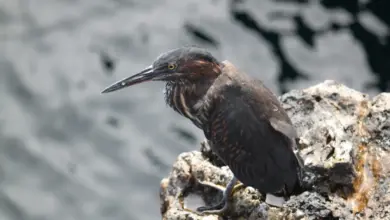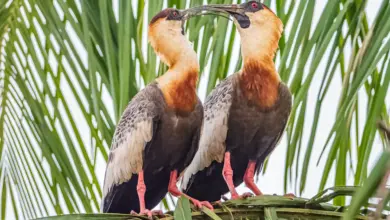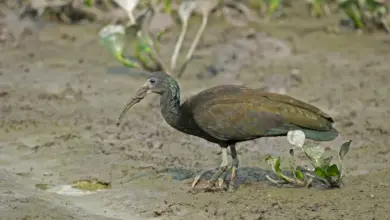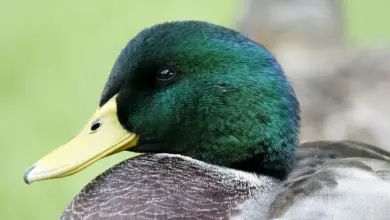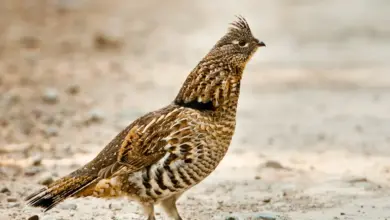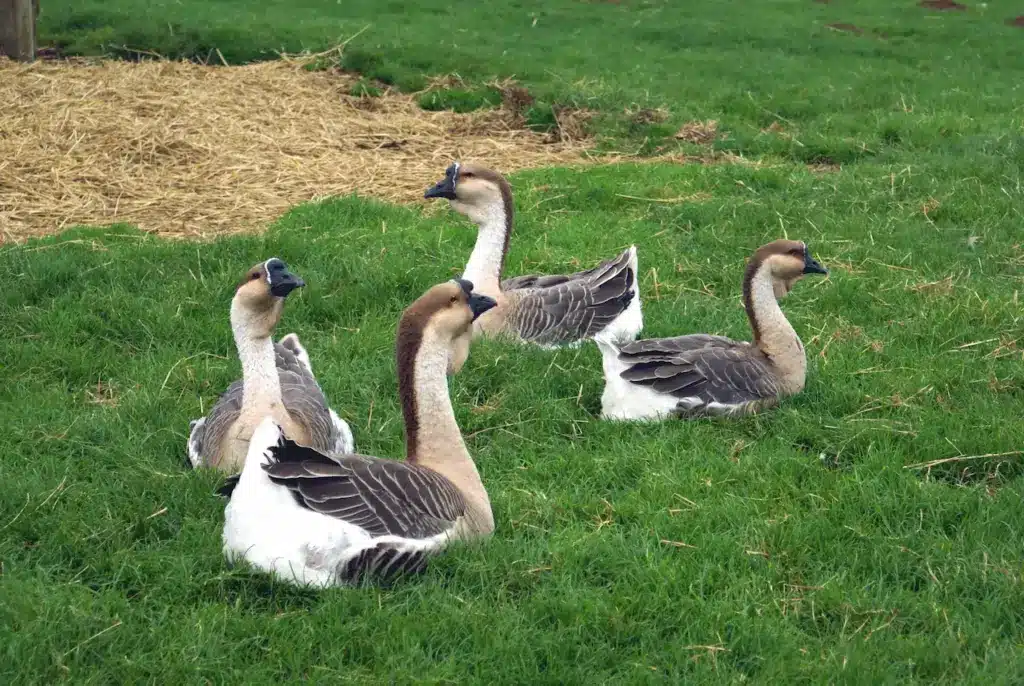
Origin
The African Geese name is not indicative of its place of origin. Throughout the history, this breed was known by several different names. They arrived in North America on ships that traveled around the world – so its exact origin is ambiguous (Johnson, et.al., 1909).
Different theories pertaining to its origin exist:
- The African is related to the Chinese Goose and both breeds are descendants from the wild Swan Goose that is native of Asia (Holderread, 1986). Any physical differences are the result of selective breeding.
- The African Goose is a hybrid between a Swan Goose and Chinese Goose.
The African Goose has been considered a distinct breed since at least the middle of the nineteenth century. The Brown African Goose was admitted to the American Poultry Association’s Standard of Perfection in 1874.
Description
The African Goose is a large and bulky bird – with a heavy body that is nearly as wide as it is long, a thick neck, and a large knob attached to its forehead (which requires several years to develop). A crescent-shaped dewlap hangs from its lower jaw and upper neck. This dewlap may become ragged in shape as the bird ages.
It is keelless, and has a smooth, rounded abdomen with little or no fatty lobe development. The tail points up and folds up neatly. The eyes are large and deep-set (Holderread, 1981).
A mature gander (male) averages 22 (10 kg) pounds, while a mature goose (female) averages 18 pounds (8 kg) (Malone, et. al., 1998).
Gender Identification
Physical Description: The adult African male weigh between 20 – 22 lbs (9 – 10 kg) – compared to the female which averages 18 lbs (8 kg) (as does the young male). The adult male generally stands taller than the female and has a larger knob above his bill. The older female tends to have a noticeable paunch or pot-bellied appearance.
Calls / Vocalizations: The adult male makes a high, long double syllable honk that is said to resemble a tug boat. The female’s call is a deeper, short single or double syllable honk.
Behavior: Male African Geese are generally more aggressive than females. The male will hiss at potential enemies, while female will back away while honking. However, females will also hills when they are alone or when protecting their young.
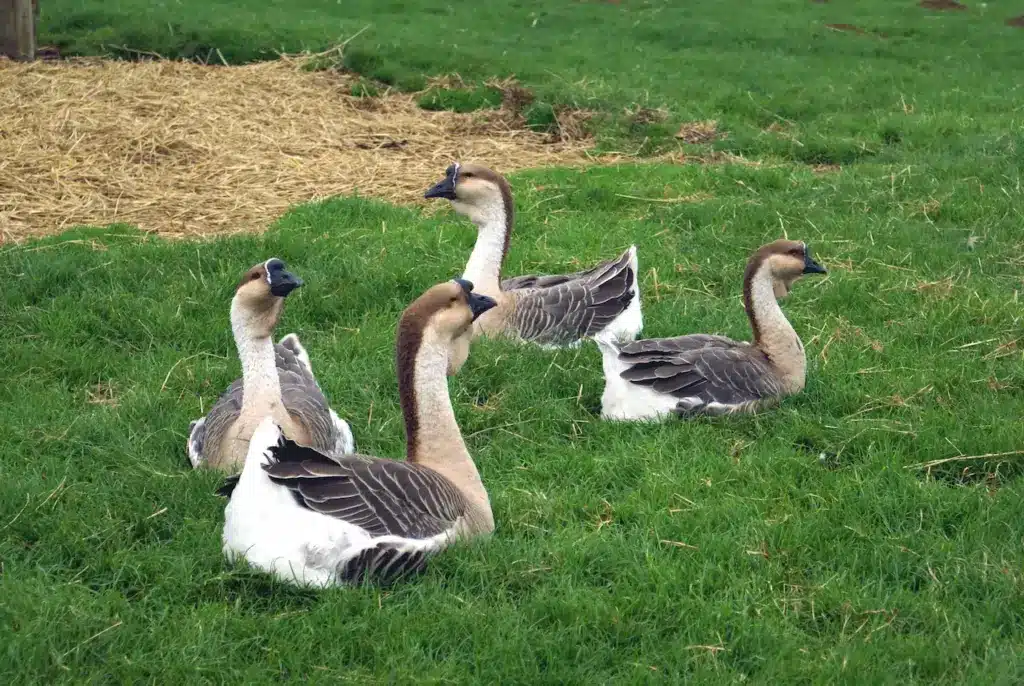
Two varieties are found in North America, the colored variety known as either Grey or Brown, and the White variety.
- Brown, Grey and Buff. The plumage is a combination of browns, buffs, greys and white. A dark brown stripe runs over the crown of the head down the back of the neck. On mature birds, a narrow band of whitish feathers separates the satin-black bill and knob from the brown head. The bill and knob is black. The legs and feet are dark orange to brownish orange.
- Whites have a pure white plumage, an orange bill and knob, and bright orange shanks and feet (Holderread, 1981).
Similar Species:
The Chinese goose shares some similar characteristics (such as color variations) with the African Goose. However, they can be distinguished by the African Goose’s larger dewlap and different knob shape. African geese are also quite a bit heavier than Chinese Geese. Additionally, they tend to have a docile temperament.
African Geese as Pets
Elizabeth Lovett describes her African Goose pets as follows: “She (featured on the image above) barks like a dog to come in the house when she misses me. My gander isn’t as social, just tolerates the bond that she and I have. “
Breeding
African geese are hardy and generally long-lived. Once acclimatized, they can withstand considerable cold weather. However, they need shelter to protect their knobs from frostbites.
With proper care, they can produce young for many years.
They mature early and some produce young in their first year. Each male can service two to six females (depending on the male).
The large eggs weigh 5 – 8 oz (142 – 227 g). They are incubated for about 32 – 32 days.
Diet / Feeding:
Ducks and geese generally feed on larvae and pupae usually found under rocks, aquatic animals, plant material, seeds, small fish, snails and crabs.
Feeding Ducks and Geese …
We all enjoy waterfowl and many of us offer them food to encourage them to come over and stay around – and it works! Who doesn’t like an easy meal!
However, the foods that we traditionally feed them at local ponds are utterly unsuitable for them and are likely to cause health problems down the road. Also, there may be local laws against feeding this species of bird – so it’s best to check on that rather than facing consequences at a later stage.
- Foods that can be fed to Ducks, Geese and Swans to survive cold winters and remain healthy when food is scarce in their environment.
Please note that feeding ducks and geese makes them dependent on humans for food, which can result in starvation and possibly death when those feedings stop. If you decide to feed them, please limit the quantity to make sure that they maintain their natural ability to forage for food themselves – providing, of course, that natural food sources are available.
Species Research by Sibylle Johnson
Please Note: The articles or images on this page are the sole property of the authors or photographers. Please contact them directly with respect to any copyright or licensing questions. Thank you.

